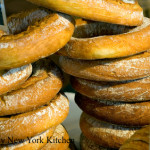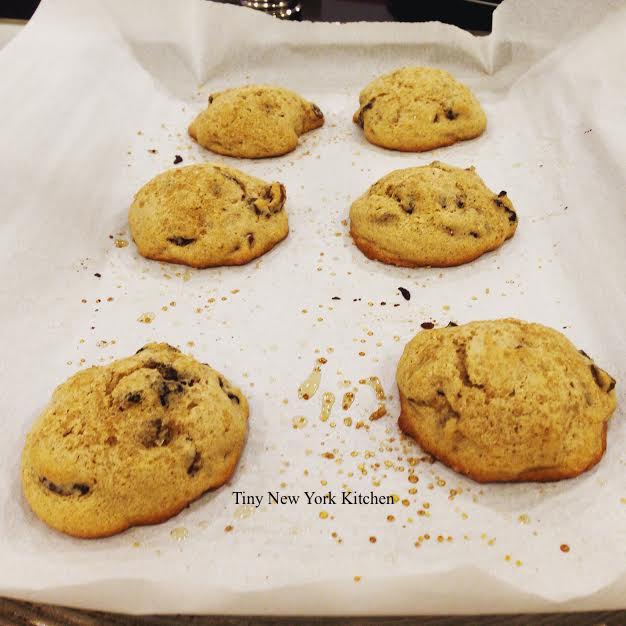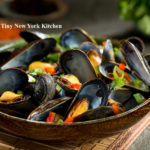Japanese Pantry
Add these Japanese items to your pantry and you’ll reach for them again and again. Some of these items are common enough that you can find them at Whole Foods or your local health food store. Others might require a trip to an Asian grocery store or an online order. Your efforts will be richly rewarded.
Sake
You don’t need to spend a lot of money on fancy sake for cooking, but a decent bottle is tastier and more complex than cooking sake.
Kombu
This mineral rich dried kelp is what gives dishes depth. The sheets should be sturdy with fine sea salt on the outside. Look for labels that say “kombu.”
Bonito Flakes
Dried, fermented, and smoked skipjack tuna (also known as katsuobushi) that is the yin to kombu’s yang in dishes. Quality ranges widely. You do get what you pay for here.
Rice Vinegar
Avoid seasoned rice vinegar, which has sweeteners and other additives in it. Choose a brand that lists rice and water as the only ingredients.
Miso
It encompasses a range of fermented soybean pastes, from younger fresh-tasting white to long-aged, funky red. The latter, which is mellow and sweet, is the best intro.
Mirin
Brewed from sticky rice, this cooking wine is sweeter and less alcoholic than sake. Pick one made with sugar rather than glucose or corn syrup because you can taste the difference.
Togarashi & Sansho
Make fruity togarashi chile powder your new Aleppo. Sansho, made from the husks of sansho peppercorns, lends tongue-tingling anise notes.
Short-Grain White Rice
With its pearly grains and subtle flavors, koshihikari is the crème de la crème of Japanese short-grain rice.
Usukuchi Soy
Lighter, thinner, and saltier than standard soy, usukuchi is perfect for seasoning dishes like yosenabe (hot pot) without darkening the color too much.
“Work With What You Got!”
© Victoria Hart Glavin Tiny New York Kitchen © 2016 All Rights Reserved
Cooking With Lemons
Lemons are a chef’s secret ingredient. Most chefs will tell you that acidity elevates any dish. There is no need to get all fancy by using twenty year old balsamic vinegar. Just finish most of your dishes with a humble squeeze of lemon juice. Most line cooks have quart containers of wedges at their stations for juicing in the moment. Why lemon? Aside from the fact that you can always find one, you’ll taste what it does to the food, not the lemon itself. Along with salt and pepper, it’s all you need to season everything from simple pastas to grilled fish, roasted meats, and sautéed vegetables, as well as pan sauces, grain salads, and even run of the mill lentil soup. In your own kitchen cut lemon wedges ahead of time, then squeeze as you cook for the brightest flavor.
“Work With What You Got!”
© Victoria Hart Glavin Tiny New York Kitchen © 2016 All Rights Reserved
Lucky Foods To Ring In The New Year
Many cultures believe that some foods are lucky and prepare them on New Year’s to ensure good fortune throughout the upcoming year.
Bagels & Doughnuts. Round foods, like bagels and doughnuts, are a great way to start the day and also symbolize coming full circle. As the year is coming to an end, it’s a good reminder that the New Year is about to begin.
Noodles. In China and Japan, long noodles represent longevity, BUT only if you don’t cut or break the noodles. You may want to make some soba noodles in a nice broth for a New Year’s lunch.
Lentils. Lentils resemble coins and plump when you cook them, which symbolizes growing wealth. Pork sausage cooked with lentils (Cotechino Con Lenticchie) Is a traditional New Year’s dish in Italy.
Fish. Whole fish (head to tail) is said to give you good luck from the beginning of the year to the very end of the year. Roasting a whole fish not only keeps it moist, but also adds extra flavor.
Pork. Pigs typically root forward while planting their feet in the ground. This signifies moving forward. In Spain it is traditional to prepare pork chops with grapes. It is customary to eat 12 grapes at the stroke of midnight in order to bring prosperity in each of the coming months.
Corn. The color of gold, which indicates a year of riches. You may want to make a cornbread to go with your New Year’s meal.
Collard Greens & Black Eyed Peas. This is a traditional Southern combination. The greens look like paper money and the black-eyed peas resemble coins. This dish is not only delicious, but also healthy.
Bundt Cake. Like bagels and doughnuts, a round Bundt cake is a delicious reminder that every new beginning comes from some other beginning’s end.
Don’t Be Greedy. While it’s tempting to eat as much of these “lucky” foods that are thought to give you the most prosperous year yet, it’s important not get too greedy. Leaving food on your plate after midnight is associated with a fully stocked pantry in the New Year.
Tiny New York Kitchen Wishes You And Your Family A Very Healthy & Happy New Year!
“Work With What You Got!”
© Victoria Hart Glavin Tiny New York Kitchen © 2015 All Rights Reserved
We At Tiny New York Kitchen Wish You And Your Family A Very Healthy & Happy New Year!
Tiny New York Kitchen Wishes You & Your Family A Very Merry Christmas!
Happy Sunday! The Fourth Candle On The Advent Wreath Is Lit. Christmas Is Nearly Here.
New York City is a wonderful place to be during the Christmas season. Store windows are decorated and the streets are a bustle with shoppers and tourists.
Saint Lucia’s Day A Swedish Christmas Tradition
















